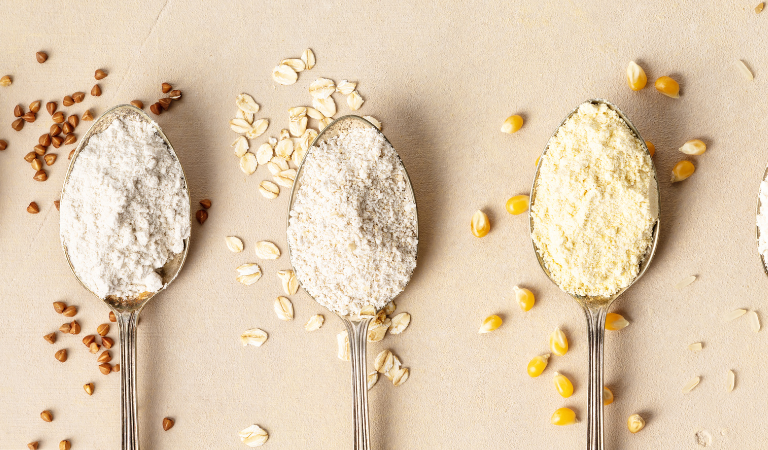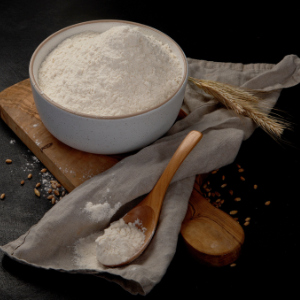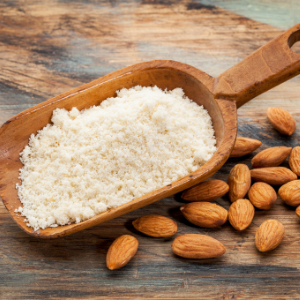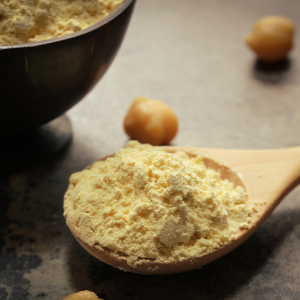There are many different types of flour on the market, and it can be tough to figure out which one is best for your recipe. In this blog post, we discuss the different types of flour and what they're good for. We'll also provide tips on how to select the right kind of flour, depending on the item you're making.
What Is Flour?
Flour is a finely ground, sifted powder of raw grains, nuts, seeds, legumes, or vegetables. It is used in a variety of foods, and depending on the type of food you're making, relies on the kind of flour you will use. It is an important ingredient in baked goods because it gives structure to those baked goods. It is a thickening agent and holds wet ingredients such as oils, milk, and eggs together. The more protein flour has, the stronger the dough will be.
How To Select The Right Type Of Flour For Your Recipe
Selecting the right flour for your recipe depends on what you're making and how you want it to feel. People usually disregard the fact that choosing flour should be taken as seriously as selecting the right type of sweetener or butter. Flour is just as essential, and not all flour is equal. It is crucial to consider the quality and protein levels of your flour. Some companies tend to bleach their flours which can contain a lot of chemicals.
In addition, every flour is milled with a specific amount of protein. The higher the protein, the stronger the quality of the flour is. Another major quality to look for in flour is its gluten content. It's what causes the flour to bind all the ingredients together and allows the dough to stretch. Some recipes specify the kind of flour needed, but if you're unsure which flour to use, then keep reading to choose the type of flour that fits best in your recipe.
Bleached Vs. Unbleached Flour
Bleached flour has a whiter, finer, and softer texture. Unbleached is more dense and tough in texture. Bleached flour is processed with chemicals to quicken the aging process. Some people notice a more bitter taste in bleached flour that isn't found in unbleached flour. Baked foods made with bleached flour are usually softer with more mass and are brighter in color than those made with unbleached flour.
Types Of Flour
There are a variety of different types of flours to use when baking food items. What kind of food you're making depends on the type of flour you will pick. Some people might choose wheat flour for its protein content versus all-purpose flour. Others might opt for a non-wheat flour due to its nutritional boost and low caloric value. Below is a list of the different types of flour and their suitability.
Wheat Flours
- All-purpose flour- A rich blend of high-gluten hard wheat and low-gluten soft wheat. Used for thickening, breading, or baking. Can be enriched with calcium and vitamin A or D.
- 100% whole wheat flour- Made from hulled red wheat grain from wheat berries. Rich in fiber and nutrients. Used the same as all-purpose flour and is ideal for baking denser bread.
- White whole wheat flour- Derived from hulled white spring meat. Usually used for a light mild taste compared to using whole wheat flour.
- Self-rising flour- A mix of all-purpose flour with salt and baking soda. Can be used to make quick bread, cornbread, or biscuits.
- Cake or pastry flour- Refined flour with a fine texture made from soft wheat. Dense in starch and typically used for cakes and other pastries.
- Bread flour- Refined flour from hard wheat combined with a bit of barley flour. Rich in gluten and used for making bread.
- Gluten flour- Made from hard wheat with almost no starch into refined flour. High in protein and increases the firmness and rise of the dough.
- Semolina flour- Coarsely-milled, refined hard durum wheat flour. Rich in gluten and protein. Used for couscous, pasta, gnocchi, and sweet puddings.
- Sprouted flour- Made from whole grains that have been sprouted. Can be used for bread, cinnamon buns, cookies, or other sweet savory treats.
Non-Wheat Flours
- Almond flour- Made from blanched almonds. Low in carbs but high in protein.
- Rye flour- Flour that is dense and dark from rye. Has less gluten than all-purpose or whole wheat flour. Great to make heavy breads. Mix with high protein flour for better rising.
- White rice flour- Made from white rice and is rich in carbohydrates. Can be used as a substitute for wheat flour and is great for pie crusts, cakes, or cookies.
- Brown rice flour- Made from unpolished brown rice. Has a nutty flavor and gives more of a grainy texture to baked items. Great for pound cake or cornbread.
- Potato flour- Made from grounding dried potatoes. Used to create a thicker base in creamy sauces, soups, gravies, or even frozen desserts.
- Corn flour- Milled from corn kernels. Used for breading or blended into batters or dough.
- Peanut flour- Made from crushed or defatted peanuts. Great for thickening soup and sauces. Adds a nutty flavor to baked items.
- Buckwheat flour- Made from buckwheat, also known as a cousin to rhubarb. Can be added to other flours to add a heart flavor and enhance colors. Great for pasta or pancakes.
- Barley flour- Made from dried and grounded barley. Perfect for flatbread or yeast bread. Also good for thickening soups, stews, or sauces. Contains minimal gluten.
- Amaranth flour- From grounded ancient seeds. Rich in protein and lysine. Used for thickening soups, gravies, or soups. Not good for making bread.
- Soy flour- Made from milled soybeans. High in protein and low in carbs. Great source of calcium, iron, and magnesium. Can be used for quick bread, cookies, and thickener for sauces.
- Spelt flour- Derived from an ancient grain similar to wheat. It’s higher in protein than wheat flour. Not good for people who are allergic to wheat. Used in the same role as wheat flour.
- Oat flour- Made from grounded oats. Adds a nutty flavor and heavy texture to baked items. Must be combined with high protein flour to rise depending on what you’re making. It is a great alternative to almond flour for those who want a similar consistency but are allergic to almonds.
- Flaxseed flour- From milled flax seeds. High in omega-3s and ideal to replace eggs or fat in baked goods.
Ethnic Flours
- Cassava (Yuca) flour- From grated and dried fibrous cassava root. Rich in carbohydrates. Popularly used as a thickener in Brazilian stews and in South America.
- Chickpea flour- Made from grounded garbanzo beans. High in protein. Used in Indian and Caribbean cooking.
- Dal flour- Made from urad dal (legumes). Used in Indian and Chinese cooking.
- Chapati flour- From wheat and malted barley flour. Used in Indian cooking.
- Fufu flour- Made from fresh or fermented cassava. Used in Nigerian cooking.
- Kamut flour- Derived from an ancient Egyptian grain. Used to substitute wheat when making pasta or bread. Known for its smooth and buttery flavor. Rich in protein.
- Millet flour- Made from millet seeds. Mildly sweet and corn-like flavor. Used for bread or pancakes.
- Teff flour- Derives from the “Eragrostis tef” plant. Contains more iron and calcium than other grains. Mild nutty and molasses flavor. High in protein, fiber, and calcium. Used in the popular injera (Ethiopian flatbread).
- Tapioca flour- Made from crushed cassava pulp. Fine in texture and thickens soups, stews, and gravies. Primarily used in South America.
- Patent flour- From the center part of the endosperm. Ideal for all kinds of Asian noodles or wontons, egg rolls, and dumplings.
How To Store Flour
The best way to store flour is in an airtight storage container, preferably in a dry, dark area. When flour is exposed to light, it can cause oxidation to occur. A pantry is an easy place to store your flour. Flour can stay fresh for about a year, though it depends on the kind of flour you're storing. It’s always helpful to take note of the expiration date of the flour you purchase and know the shelf life for that specific kind of flour. For example, white flour typically lasts longer than other types such as whole wheat or self-rising flour. You can also optionally store flour in a refrigerator to extend its shelf life.
Choose The Perfect One
Different types of flour are suited for specific recipes. If you’re looking to make a certain type of baked goods, it’s important to use the right kind of flour. All-purpose flour is versatile and can be used in most recipes, while whole wheat flour has more nutrients and a denser texture. Experiment with different types of flour to find which ones work best for your baking needs.








